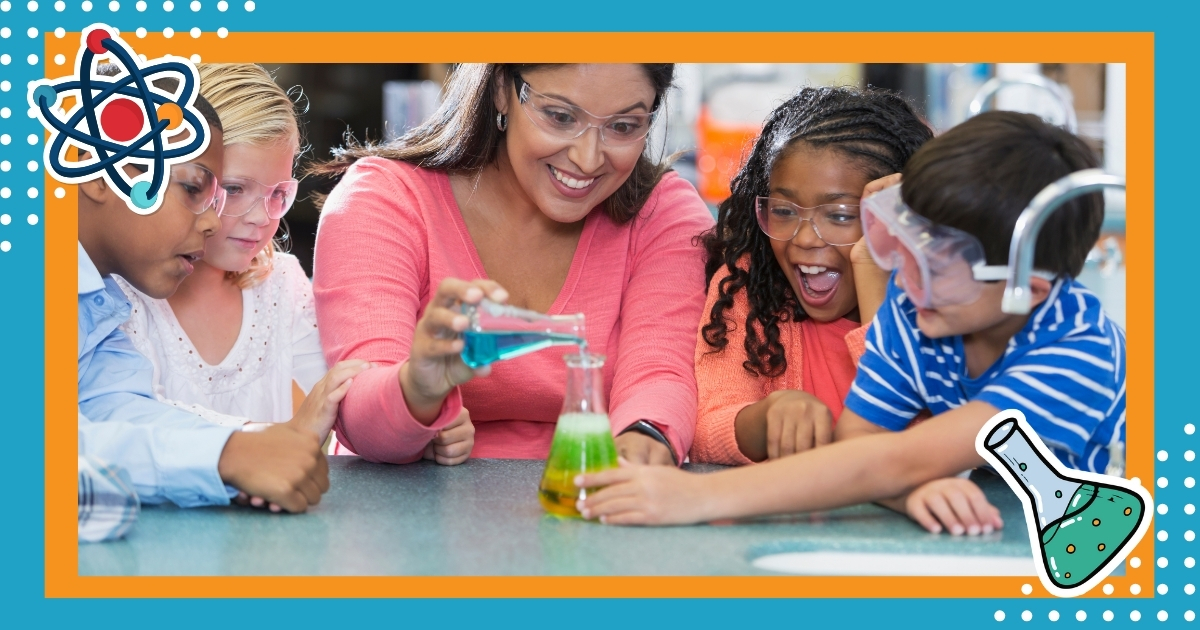Teaching science at home can be a rewarding experience for both parents and children. Unlike a traditional classroom, homeschooling provides the flexibility to explore subjects at your own pace and tailor lessons to your child’s interests. Whether you’re building volcano models or discussing how clouds form, science lessons at home can be both fun and educational.
This guide offers effective strategies for incorporating engaging and informative homeschool science experiments into your teaching routine, making the most of your resources while inspiring curiosity and critical thinking. With some hands-on science activities and thoughtful planning, teaching science concepts at home doesn’t have to feel overwhelming.
Why Science Education is Vital in Homeschooling
Science plays a critical role in your child’s educational development. It not only helps kids understand the world around them but also develops essential skills like problem-solving, critical thinking, and observation.
A 2019 study from the National Science Foundation found that 84% of Americans recognize the importance of science in everyday life. However, many children lose interest in science by middle school. Homeschooling offers a unique chance to nurture an enduring curiosity in science by making it interesting, engaging, and relevant.
Opportunities for Personalized Learning
Homeschooling allows you to create a personalized approach that understands your child’s needs. While one child might thrive on structured experiments, another might prefer exploring nature. By tailoring lessons, you can ensure your child stays curious and eager to learn.
Some strategies to personalize learning include:
- Adjusting the difficulty level of experiments and activities.
- Tying concepts to their real-life interests, like animals or space.
- Using everyday scenarios or questions to teach science (e.g., “Why does ice melt faster in warm water?”).
Creating an Engaging Science Curriculum
Building a science program for your homeschool doesn’t require fancy labs or expensive equipment. With creativity and basic tools, you can make science lessons engaging and impactful.

Start with Homeschool Science Experiments
At the heart of any science curriculum should be hands-on experiments that demonstrate key ideas. Kids are more likely to remember what they’ve learned when they can see it in action. Here are a few beginner-friendly ideas to bring science to life at home:
- Baking Soda and Vinegar Volcano: Demonstrate chemical reactions.
- Grow a Bean Plant in a Jar: Explore biology and plant life cycles.
- DIY Rock Candy Crystals: Show how solids form from liquids.
Experiments like these teach scientific concepts and encourage children to ask questions and solve problems.
Use Everyday Objects for Learning
You don’t need a lot of money to explore science. Many homeschool science experiments only require household items. Cooking, for instance, teaches chemistry (e.g., how yeast makes dough rise) while gardening introduces biology and sustainability.
Take Education Outdoors
Nature is the perfect classroom for teaching science concepts at home. From studying insects in the backyard to observing weather patterns, the opportunities are endless. Some outdoor activities include:
- Collecting and identifying leaves to study plant species.
- Stargazing to learn about astronomy.
- Tracking shadows to understand the Earth’s rotation.
Teaching Science Concepts at Home
One of the best ways to make science stick is by incorporating clear and age-appropriate explanations. Prepare to focus on basic principles first and gradually build on those foundations.
Focus on the Basics for Younger Learners
For younger children, teaching science concepts at home should start with fundamentals like:
- The scientific method (ask, hypothesize, test, and conclude).
- Observation and recording data (e.g., measuring rainfall during a week).
- Basic topics such as gravity, weather, or animal life cycles.
Gradual Complexity for Older Students
For older students, you can build on those basics to explore more specialized fields like physics, chemistry, or biology. Consider virtual lab simulations for experiments too complex to replicate at home.
Hands-On Science Activities to Boost Engagement
Active participation keeps lessons exciting and children motivated to learn more. Hands-on science activities provide a break from textbooks while reinforcing concepts.
- Simple Machines: Build a lever or pulley system to explore physics.
- Egg Drop Challenge: Test engineering skills by designing a protective egg carrier.
- Ecosystem in a Bottle: Create a self-contained environment to understand ecosystems.
These kinds of hands-on projects are excellent for fostering collaborative thinking if you have multiple kids involved in the same experiment. It’s also an opportunity to teach kids how to plan, execute, and analyze results.
Overcoming Challenges in Teaching Science
Teaching science at home is rewarding, but it comes with its own set of challenges. Whether it’s limited resources or working with multiple age groups, homeschooling parents face unique hurdles.
Limited Access to Traditional Labs
If you don’t have access to Bunsen burners or microscopes, don’t worry! Online resources can serve as a great alternative. Virtual science labs and open-access educational videos provide rich content to supplement lessons. Websites like YouTube Kids often have tutorials guiding families through a variety of experiments.
DIY solutions are also fantastic. For example:
- Use a flashlight to study refraction and reflection.
- Build a homemade compass using magnets and paper.
Balancing Multiple Ages and Learning Styles
If you’re teaching multiple kids with different learning needs, try group activities that allow every child to play a role. While older children can handle measurements or calculations, younger ones can focus on mixing or observing.
Additionally, incorporating creative projects like making posters or reports lets kids absorb the material differently, catering to visual, auditory, and hands-on learners.
Keeping the Momentum Going
A structured schedule can help build consistency and excitement. Set goals, like completing one experiment a week or dedicating 30 minutes daily to science.
Building Lifelong Skills and Passions
Science isn’t just another subject—it’s a vital tool for understanding and navigating the world around us. Homeschooling, with its emphasis on curiosity and exploration, offers a unique opportunity to lay the groundwork for lifelong learning.
Early exposure to science can also spark future career interests. STEM jobs are expected to grow by 8% by 2029, making it more important than ever to introduce kids to fields like robotics, coding, or environmental science. Connecting lessons to real-world jobs can make learning more engaging and meaningful.
Science can also go beyond education and turn into a fun hobby. If your child loves animals, focus on biology. If they’re fascinated by gadgets, explore engineering. Supporting their interests with books, hands-on kits, or local workshops can keep their curiosity alive and thriving.
Fostering a Love for Science at Home
Teaching science at home offers more than academic benefits. It’s a chance to bond with your child while fostering a lifelong love of learning. By integrating homeschool science experiments, hands-on science activities, and personalized instruction, you can create an engaging and meaningful educational experience.
Remember, science doesn’t have to be expensive or intimidating. All you need is a little curiosity, some creativity, and a willingness to explore the wonders of our world. Start small with weekly experiments and nature walks, and watch as your child’s confidence and enthusiasm for science grow.
Get started today by planning an exciting science activity for the week. Whether it’s growing crystals or exploring the stars, the possibilities are endless!





